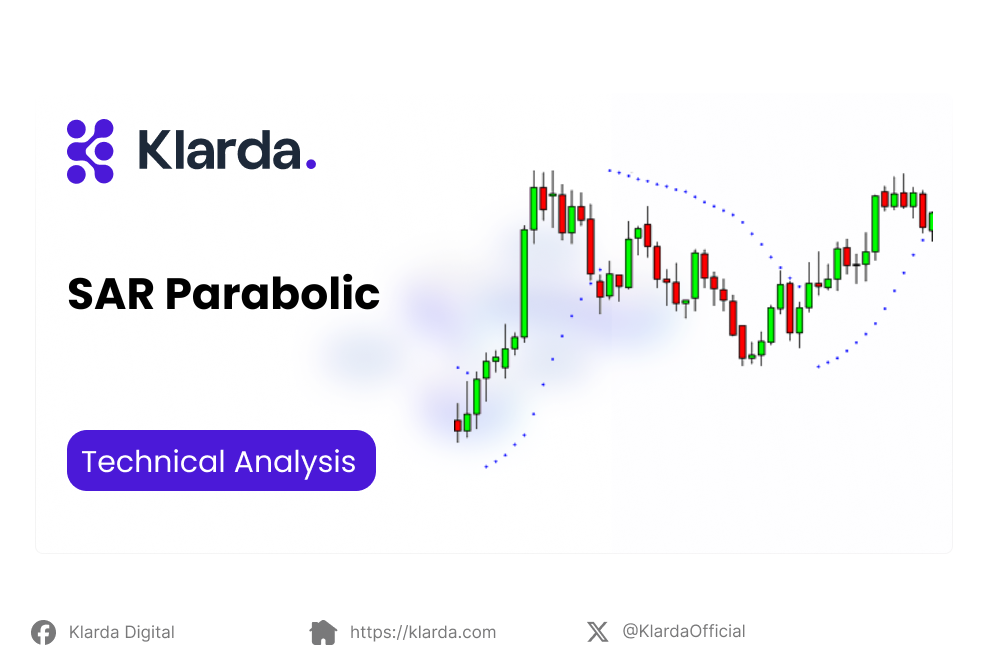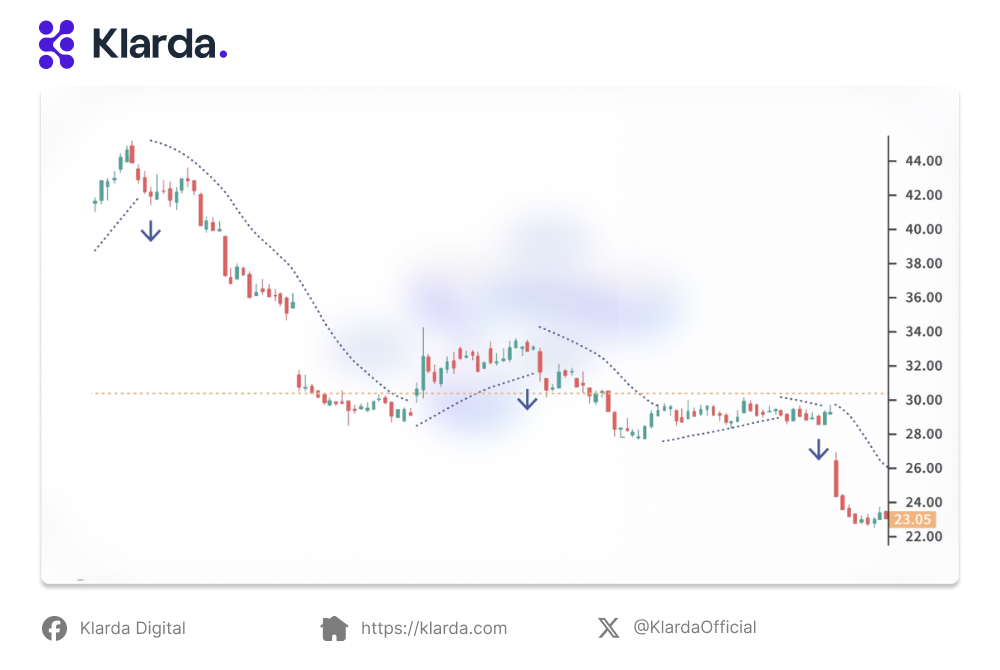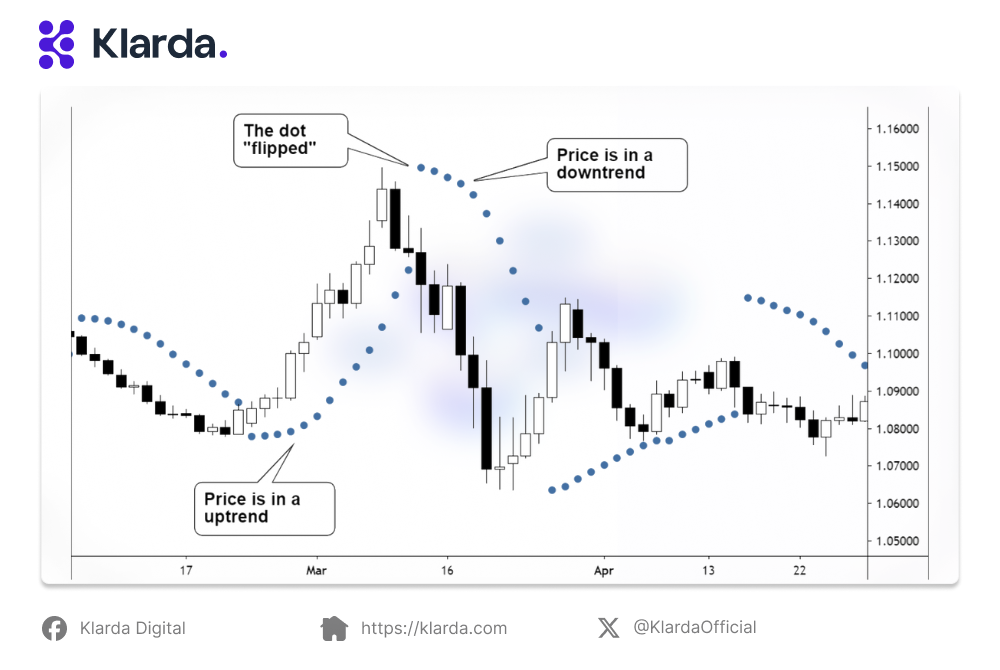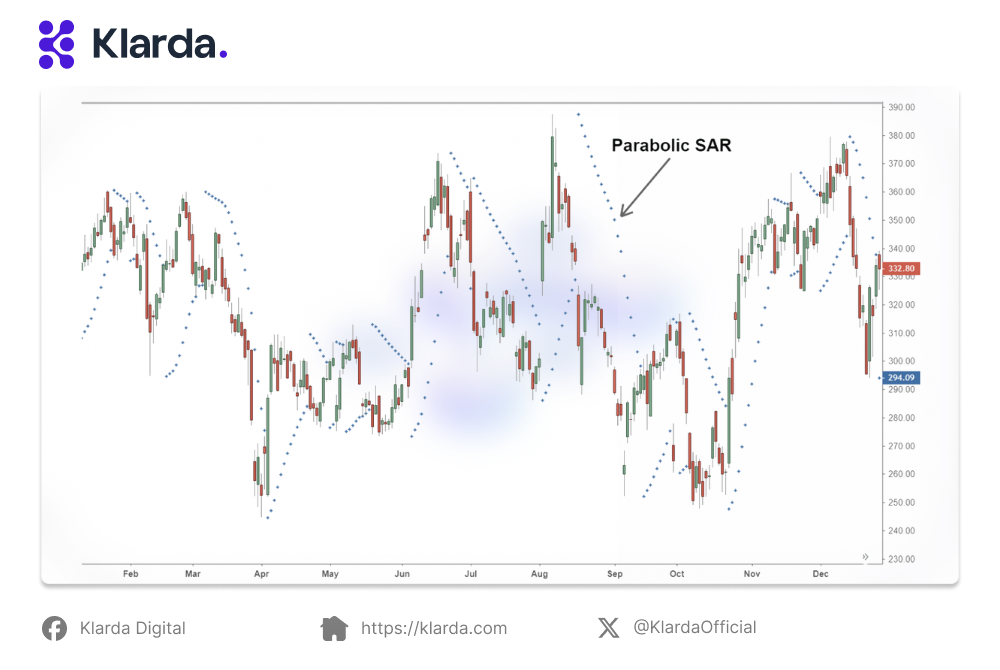SAR Parabolic
The SAR Parabolic indicator, commonly known as Parabolic SAR (Stop and Reverse), is a technical analysis tool crafted to pinpoint potential reversals.
In the ever-evolving realm of financial markets, traders and investors seek tools that can aid them in making well-informed decisions. One such tool that has garnered attention for its unique approach to market analysis is the SAR Parabolic indicator. In this article, we will delve into the depths of the SAR Parabolic Indicator and explore its effectiveness.

KEY TAKEAWAYS
- Parabolic SAR indicator is a valuable tool for traders seeking to capitalize on trend changes and manage their risk effectively.
- Drawing the SAR Parabolic Indicator involves plotting the calculated SAR values as dots on the price chart.
- The parabolic SAR operates continuously, generating signals consistently, irrespective of the presence or absence of a strong trend.
WHAT IS SAR PARABOLIC INDICATOR?
The SAR Parabolic indicator, often referred to as Parabolic SAR (Stop and Reverse), is a technical analysis tool designed to identify potential trend reversals in the price direction of an asset. Developed by J. Welles Wilder, Jr., the indicator was introduced in his 1978 book, "New Concepts in Technical Trading Systems." Its primary purpose is to highlight potential entry and exit points for traders.
What is Parabolic SAR in trading? In trading, the SAR Parabolic Indicator is represented by a series of dots, either above or below the price chart, signaling potential trend changes. When the dots switch sides, from being below to above the price or vice versa, it suggests a potential reversal in the current trend. This makes it a valuable tool for traders seeking to capitalize on trend changes and manage their risk effectively.

The SAR Parabolic Indicator is represented by a series of dots, either above or below the price chart, signaling potential trend changes
WHAT SAR PARABOLIC INDICATOR TELLS?
Understanding the features of the SAR Parabolic Indicator is crucial for harnessing its full potential in market analysis. The indicator provides key information about the potential direction of a trend, facilitating strategic entry and exit decisions.
To calculate the SAR Parabolic Indicator:
- The Parabolic SAR calculates its indicator dot placement by considering the highest and lowest prices, along with the acceleration factor. The Parabolic SAR formula is outlined as follows:
- For an Uptrend: Uptrend Parabolic SAR = Prior SAR + Prior AF x (Prior EP - Prior SAR)
- For a Downtrend: Downtrend Parabolic SAR = Prior SAR - Prior AFx(Prior SAR - Prior EP)
Explaination:
- EP represents the extreme point in a trend, denoting the highest point in an uptrend or the lowest point in a downtrend.
- AF is the acceleration factor, initially set to 0.02. It increments by 0.02 with each recorded EP, reaching a maximum of 0.20. Traders can customize the acceleration factor based on their trading style or the specific instrument being traded.
The outcomes from these calculations yield a dot that is plotted either above or below the asset's price action. These dots serve to indicate the current direction of the price movement.
So, how to read Parabolic SAR? Drawing the SAR Parabolic Indicator involves plotting the calculated SAR values as dots on the price chart. The dots appear below the price during an uptrend and above the price during a downtrend.
The benefits of the SAR Parabolic Indicator include:
- Trend Identification: One of the use of Parabolic SAR indicator is to help traders identify the direction of the prevailing trend.
- Entry and Exit Points: The switching of SAR dots provides potential entry and exit signals.
- Risk Management: SAR assists in setting stop-loss levels to manage risk effectively.

Drawing the SAR Parabolic Indicator involves plotting the calculated SAR values as dots on the price chart
HOW DOES PARABOLIC SAR INDICATOR WORK?
So, how does Parabolic SAR indicator work? To understand the practical application of the SAR Parabolic Indicator, consider the following examples:
- Trend Reversal: A series of SAR dots below the price, followed by a sudden switch above the price, signals a potential reversal from a downtrend to an uptrend.
- Uptrend Confirmation: SAR dots consistently appearing below the price during an upward movement confirm the strength of the prevailing uptrend.
- Downtrend Confirmation: SAR dots consistently appearing above the price during a downward movement confirm the strength of the prevailing downtrend.
- Dynamic Stop-Loss: Traders can use SAR as a dynamic trailing stop-loss, adjusting it as the price moves.
LIMITATION
The SAR Parabolic indicator operates continuously, generating signals consistently, irrespective of the presence or absence of a strong trend. Consequently, numerous signals may lack quality when there is no substantial trend or when a significant trend fails to materialize after a signal.
Additionally, reversal signals are eventually triggered, regardless of whether an actual price reversal occurs. This phenomenon arises because a reversal signal is initiated when the parabolic SAR aligns with the price, driven by the acceleration factor within the formula. As a result, a trader might exit a trade based on a reversal signal, even if the price hasn't technically undergone a reversal.

The SAR parabolic indicator operates continuously, generating signals consistently, irrespective of the presence or absence of a strong trend.
In conclusion, the SAR Parabolic indicator stands as a valuable tool for traders navigating the complexities of financial markets. Its ability to signal potential trend reversals and provide strategic entry and exit points makes it a sought-after indicator in technical analysis.
Updated 7 months ago